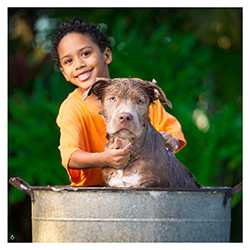NCEZID: Taking a One Health approach
More than half of all infections that people get are spread by animals. Diseases like rabies, Salmonella infection, and West Nile virus are examples of zoonotic diseases—diseases that can be shared between animals and people. Animals can sometimes serve as early warning signs of potential illness in people. For example, birds often die of West Nile virus before people get sick with West Nile virus fever.
NCEZID’s One Health Office recognizes that the health of people is connected to the health of animals and the environment. A One Health approach encourages collaborative efforts of many experts (like physicians and veterinarians) working across animal, human, and environmental health to improve the health of people and animals, including pets, livestock, and wildlife.
What we’re doing:
- The One Health Office is working with multiple partners to educate rural youth in agricultural organizations like 4-H and the Future Farmers of America about preventing the spread of diseases shared between people and animals like zoonotic influenza viruses. The project has reached thousands of young people and their families in Arizona, Georgia, Iowa, Michigan, Minnesota, and Ohio, many of whom are actively involved in exhibiting livestock or farming.
- One important outcome of the project was the rapid response to an outbreak of flu in people who had attended agricultural fairs in Ohio and Michigan. Partnerships formed during the project helped pinpoint the source of illness—infected swine exhibited at the fairs.
- On the global front, One Health is taking a strategic, targeted approach to controlling infectious disease. Experts from the One Health Office lead One Health Zoonotic Disease Prioritization Workshops so that countries with limited resources can focus on the top zoonotic diseases (for example, rabies and Ebola) of greatest national concern. Workshop participants include a wide-ranging group of people who protect health—of people, animals, or the environment—and they identify that country’s top 5 diseases to target. Prioritizing diseases means countries can more efficiently build lab capacity, conduct disease surveillance, plan outbreak response and preparedness activities, and create disease prevention strategies to reduce illness and death in people and animals.
Pet owners need to know about zoonoses and how to prevent them, so they can enjoy their pets without getting sick.
- Page last reviewed: August 28, 2017
- Page last updated: August 28, 2017
- Content source:
Centers for Disease Control and Prevention
National Center for Emerging and Zoonotic Infectious Diseases (NCEZID)


 ShareCompartir
ShareCompartir
